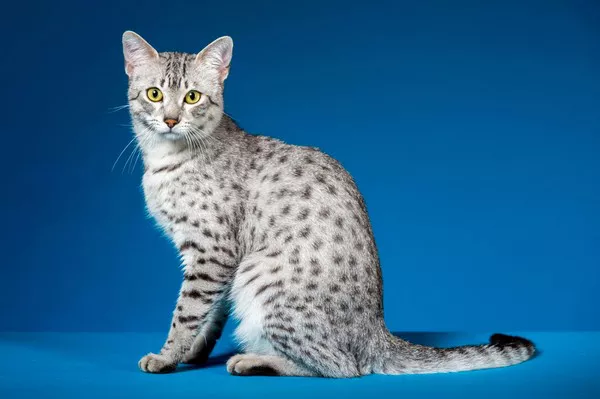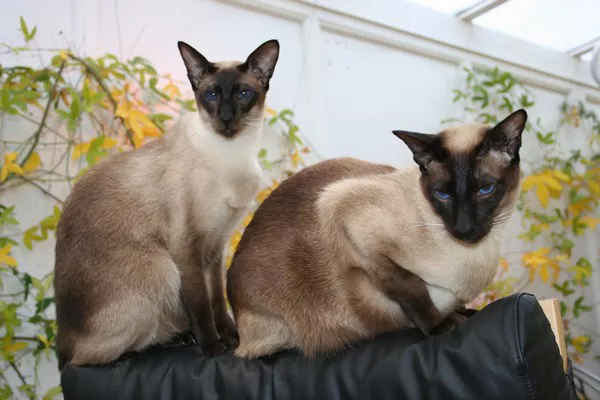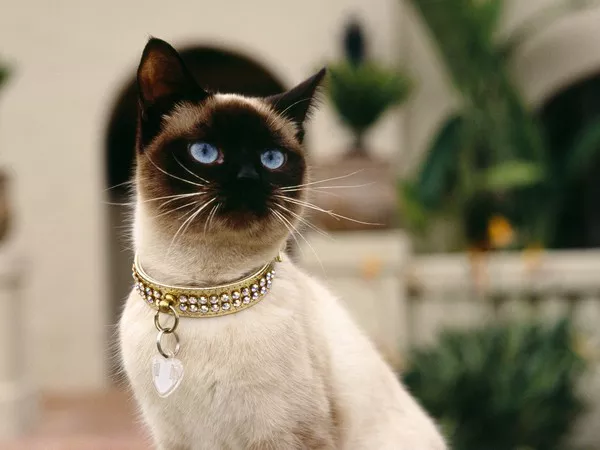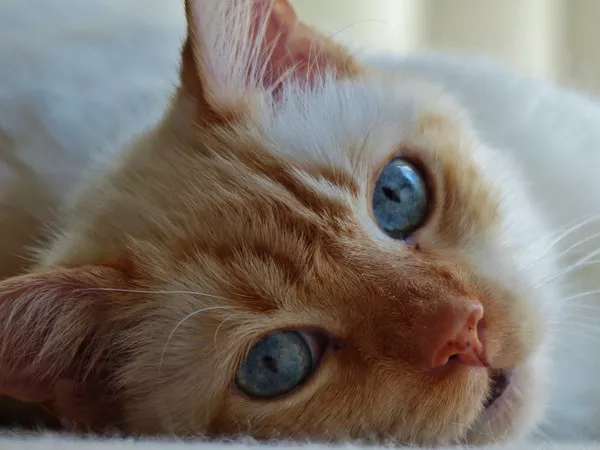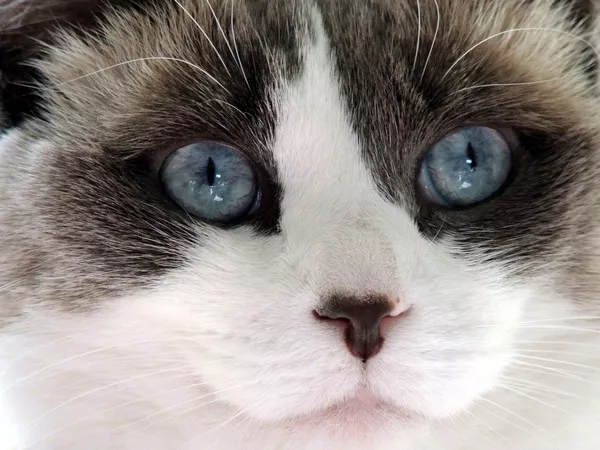Cats, with their diverse and captivating appearances, have enchanted humans for centuries. Among the myriad coat patterns that grace the feline world, the striking combination of a white coat adorned with captivating black spots stands out as a unique and visually arresting trait. In this comprehensive exploration, we delve into the fascinating realm of white cats with black spots, unraveling the mystery behind these distinctive patterns and discovering the breeds that carry this enchanting genetic legacy.
The Allure of Spots on Snow:
1. The Aesthetics of White and Black Spots:
The juxtaposition of a pristine white fur background and the bold, contrasting allure of black spots creates a visually stunning effect. These cats often evoke images of a snow-covered landscape adorned with nature’s intricate designs. Understanding the genetic factors behind this coat pattern adds a layer of intrigue to their already captivating presence.
2. Genetic Basis of Coat Patterns:
The intricate dance of genetics determines the coat colors and patterns in cats. The interaction between various genes, especially those responsible for pigmentation, leads to the diverse array of coats observed in feline companions. The combination of white fur with distinct black spots is the result of specific genetic variations that dictate the distribution of pigments during the cat’s development.
Unraveling the Breeds:
1. Turkish Van:
The Turkish Van, hailed for its captivating coat and unique personality, is a prime example of a white cat with distinct black spots. Originating from the rugged landscapes of Turkey, this breed boasts a semi-longhaired coat that is predominantly white, adorned with contrasting black markings, typically concentrated on the head and tail. The Turkish Van’s alluring spots add to its mystique, creating a cat that is both elegant and playful.
2. Bengal:
Renowned for its wild appearance and captivating patterns, the Bengal cat often showcases a coat adorned with striking black spots. While Bengals come in various color variations, the combination of a white coat with bold black spots is a testament to the breed’s unique charm. Bengals are celebrated for their energetic nature and distinctive coat patterns, making them a favorite among cat enthusiasts worldwide.
3. Egyptian Mau:
The Egyptian Mau, with its rich history dating back to ancient Egypt, is another captivating breed that may exhibit a white coat adorned with mesmerizing black spots. Known for its distinctive “scarab beetle” markings, the Egyptian Mau carries an air of regality coupled with a playful demeanor. This breed’s enchanting spots contribute to its allure, reflecting a connection to its storied past.
4. Oriental Shorthair:
The Oriental Shorthair, an elegant and sleek breed, can also display the captivating combination of a white coat with black spots. This breed, an offshoot of the Siamese, exhibits a variety of coat colors and patterns, and the striking appearance of black spots on a white canvas is a testament to the breed’s diversity. With its expressive eyes and distinct coat, the Oriental Shorthair captivates those seeking a feline companion with a touch of sophistication.
5. Cornish Rex:
The Cornish Rex, known for its distinctive curly coat, may surprise enthusiasts with the occasional manifestation of a white coat adorned with black spots. While less common than solid colors or other patterns, the presence of black spots on a white Cornish Rex adds a unique flair to an already extraordinary breed. The Cornish Rex’s playful and affectionate nature complements its visually striking appearance.
Genetic Anomalies and Variations:
1. Understanding Coat Genetics:
The genetics of coat color and patterns in cats involve multiple genes interacting in intricate ways. While certain breeds are more predisposed to specific coat patterns, genetic anomalies and variations can lead to unique individuals within a breed. The occurrence of a white coat with black spots may result from the interplay of various genes that influence pigmentation during the cat’s development.
2. Occasional Surprises:
In breeds where the white coat with black spots is not a standard, occasional surprises may occur. Genetic mutations or variations can give rise to individual cats within a litter displaying unexpected coat patterns. These unique felines, often referred to as “sports” or “mutants,” contribute to the genetic diversity within a breed.
Health Considerations:
1. Coat Color and Health:
While coat color and patterns primarily result from genetic factors, certain health considerations may accompany specific coat patterns. In breeds with predominantly white coats, there is an increased risk of congenital deafness, especially in cats with blue eyes. Responsible breeders prioritize the overall health and well-being of their cats, conducting health screenings and genetic tests to ensure the long-term vitality of the breed.
2. Deafness in White Cats:
The link between white coat color and congenital deafness is a well-documented phenomenon. Cats with completely white coats, particularly those with blue eyes, may have a higher likelihood of being deaf. This is attributed to the absence of pigment-producing cells in the inner ear, which are crucial for auditory function. While not all white cats are deaf, breeders and owners should be aware of this potential association.
Appreciating the Unique Appeal:
1. Aesthetic Preferences:
The allure of white cats with black spots extends beyond the realm of genetics and health considerations. Aesthetic preferences play a significant role in the popularity of specific coat patterns. The striking contrast between the white canvas and bold black spots appeals to those who appreciate the visual impact of a cat’s coat. Aesthetic preferences vary among individuals, contributing to the diverse array of beloved cat breeds.
2. Personal Connections:
Cat enthusiasts often form strong personal connections with their feline companions, transcending considerations of coat color and patterns. While the visual appeal of white cats with black spots is undeniable, the bond forged between a cat and its owner goes beyond external characteristics. The unique personalities, quirks, and interactions create a profound connection that enhances the joy of cat ownership.
Responsible Breeding Practices:
1. Ethical Considerations:
Responsible breeding practices prioritize the health, well-being, and genetic diversity of cat breeds. Ethical breeders conduct thorough health screenings, genetic testing, and adhere to established breed standards. While the allure of specific coat patterns may be tempting, responsible breeders prioritize the overall health of the breed and work to eliminate potential genetic issues.
2. Avoiding Unethical Practices:
The demand for cats with specific coat patterns has, at times, led to unethical breeding practices, including the intentional breeding of cats solely for their unique appearance. This can contribute to health issues within the breed and perpetuates irresponsible breeding practices. Prospective cat owners are encouraged to seek reputable breeders who prioritize the welfare of the cats they produce.
See Also: 10 Most Beautiful Cats In The World
In Conclusion:
The world of cats is a tapestry of diversity, with each breed and individual contributing to the rich mosaic of feline companionship. White cats with black spots, whether belonging to established breeds or displaying unique coat patterns, exemplify the enchanting variety within the feline world. As we celebrate the beauty of these captivating cats, let us also embrace responsible ownership, ethical breeding practices, and the intrinsic value of the feline-human bond. Whether adorned with bold black spots or showcasing a solid hue, every cat brings its unique charm, enriching the lives of those fortunate enough to share their homes with these extraordinary creatures.

